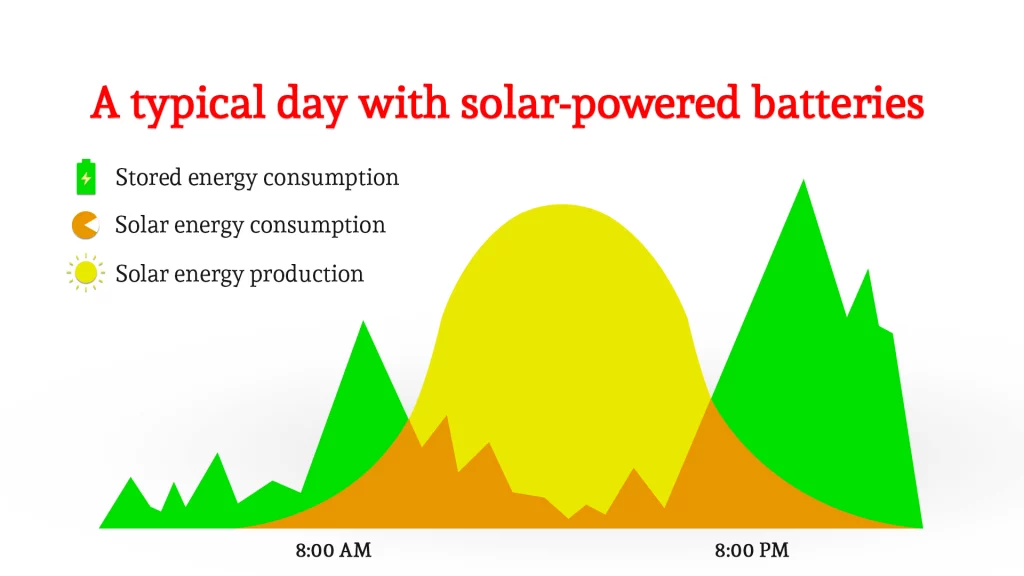
SolarRetrofit with storage
Increase the overall energy independence with battery storage solutions.
Owners of a solar system without storage will sooner or later think about installing storage, which means retrofitting your solar system.
Why retrofit with battery storage?
The emphasis is rapidly moving away from feed-in compensation as a source of income for photovoltaics and toward expanding your own self-consumption of the PV electricity in order to turn a profit. It is necessary to utilize the electricity you produce on your roof even more effectively.
With storage the electricity can be saved during the day and used as needed.

![]() Time for solar storage!
Time for solar storage!
Make solar systems future-proof by choosing a storage option. During a power outage, PV systems owners will continue to use electricity stored in their batteries, allowing them to maintain power for essential appliances and devices.
A storage system will provide more resilience during prolonged power outages and you are also able to sell excess energy back to the grid, providing a source of income and increasing your overall energy independence on fossil fuels: This way you contribute to a more sustainable future for all by reducing dependence on fossil fuels and mitigating the negative impacts of climate change.

The first decision to make when thinking about storage is whether to create an AC-coupled system (with battery inverters) or a DC-coupled system (with hybrid inverters).
In a DC-coupled system, the PV modules provide electricity to a hybrid inverter, which then charges the batteries. The hybrid inverter converts DC current to AC for usage in the house or company building when electricity from the batteries is required.
An AC-coupled system contains two inverters, one for storage and one for PV modules, The term “AC coupled” refers to the fact that the inverter is connected to the AC side of the existing solar power system, rather than the DC side. When the grid fails in grid-tied systems, the battery inverter isolates the PV inverter and the necessary load panel from the grid using an internal transfer switch. Due to this, the PV array can still provide electricity when the grid is down.
Although incredibly powerful and easy to set up, AC-coupled solutions are slightly less effective at charging than DC-coupled ones. Nonetheless, they are particularly efficient at supplying AC loads during the day and may be expanded to create microgrids by adding more solar inverters.
A DC-coupled system might not be the best choice for a customer with an existing PV system. The existing PV inverters might be rendered useless if the system is changed with hybrid inverters, which could necessitate extensive rewiring.
